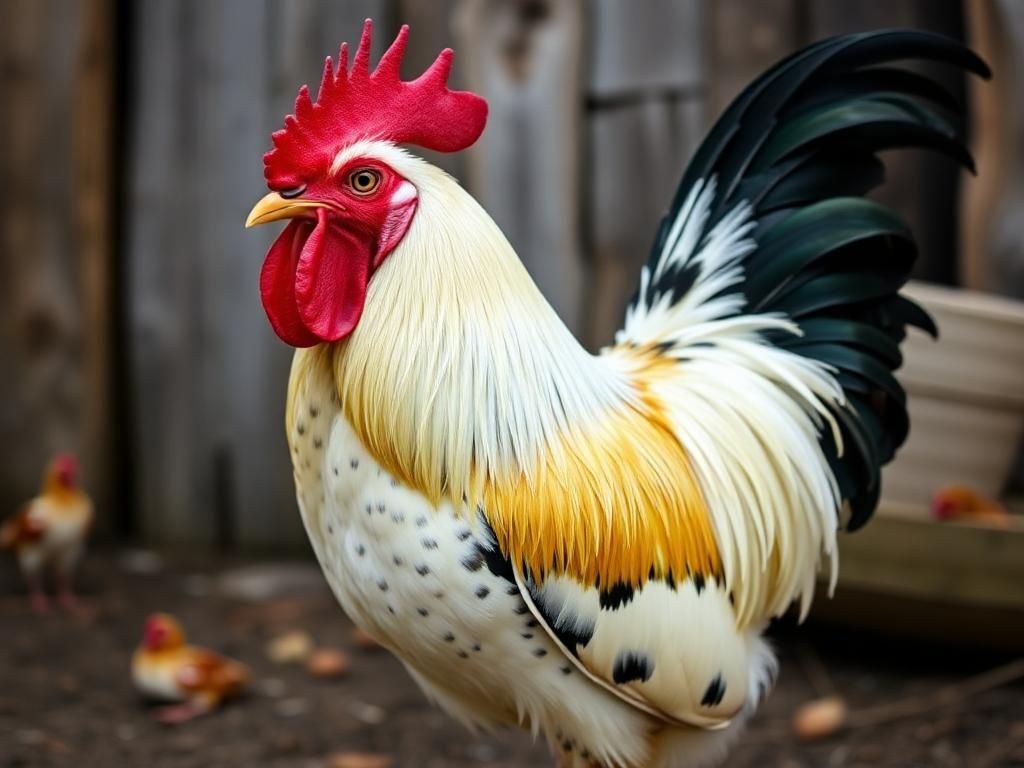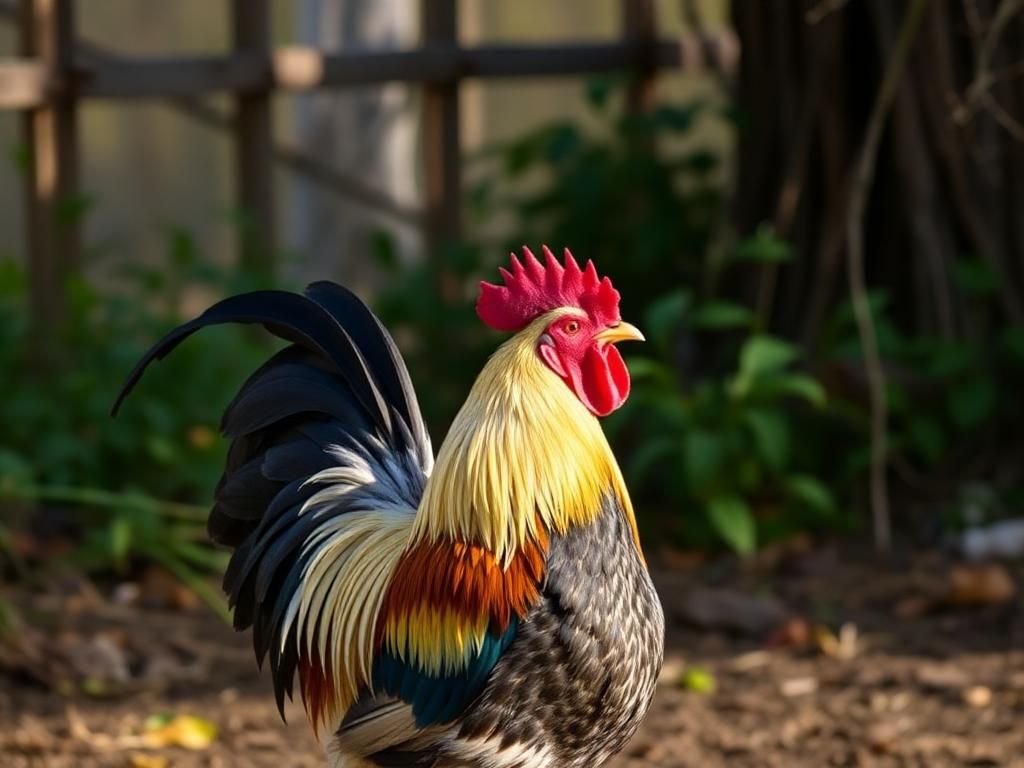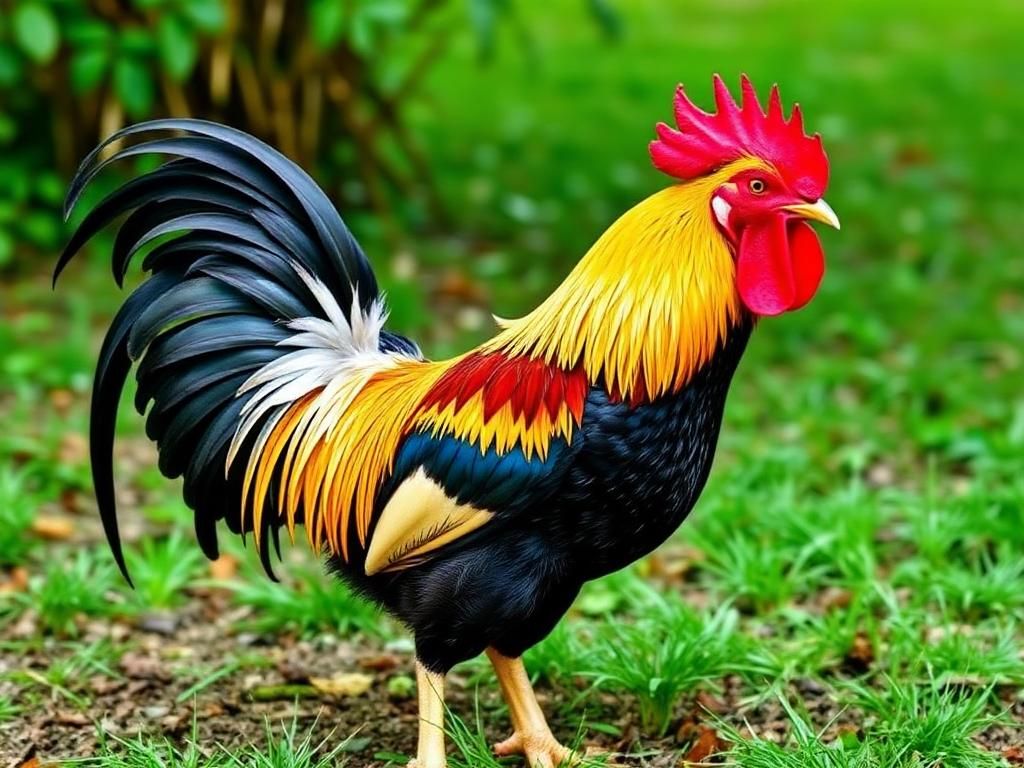Roosters have long held a significant place in both agriculture and various cultures around the world. Known for their characteristic crowing at dawn, these birds are more than just noisy companions on the farm. Understanding why do roosters crow delves into the realms of animal behavior, communication, and even biology. Their crowing isn’t just a morning alarm; it becomes an essential part of their social interactions, territorial instincts, and environmental responsiveness. By exploring this fascinating aspect of rooster behavior, we gain insights into their roles within poultry flocks and the agricultural landscape.
The Nature of Roosters
Overview of Rooster Characteristics
Roosters, the male counterparts of hens, are known for their vibrant plumage and protective instincts. They play a crucial role in the dynamics of a chicken flock, often acting as the protector and leader. The typical rooster stands out with its larger size, bright feathers, and distinctive wattle and comb compared to female hens. Understanding the differences between roosters, hens, and chicks is vital, as their roles in the flock vary significantly.
The Anatomy of Crowing
The crowing sound of a rooster is produced by a specialized vocal organ known as the syrinx. This complex structure, located at the junction of the trachea and bronchi, allows roosters to produce varied sounds, including their iconic crow. Different breeds exhibit unique crowing styles and tones, which can be influenced by their genetic background and overall health. University of Minnesota Extension provides a detailed look into poultry anatomy and behavior.
The Purpose of Crowing
Territorial Instincts
One of the primary reasons for a rooster’s crowing is its territorial instinct. By crowing, a rooster asserts its dominance and marks its territory. This behavior is especially evident in flocks with multiple roosters, where they establish pecking order through vocalizations. The crowing serves as a warning to rivals to stay away from their established territory.
Communication
Crowing is also a crucial means of communication among chickens. Roosters use different crowing patterns to signal various messages, such as alerts for potential danger, calls to attracting mates, or expressions of contentment within the flock. The ability to convey different messages through vocalizations highlights the complexity of their social interactions.
Environmental Factors
Environmental factors play a considerable role in when and why roosters crow. The influence of light and the natural rhythm of sunrise can trigger crowing behavior. As dawn approaches, the light induces a physiological response in roosters, prompting them to announce the start of a new day. Crowing frequency may also vary based on season, with longer daylight hours in summer leading to increased crowing.

Biological and Behavioral Triggers
Circadian Rhythms
Roosters possess a well-defined circadian rhythm, allowing them to anticipate daybreak and time their crowing accordingly. This internal clock governs many behaviors across various species, including the crowing patterns of roosters. Their biological clocks are often synchronized with daylight cycles, driving them to crow at dawn. This mechanism can be compared to other animals, such as songbirds, which also vocalize around similar times.
Social Factors
The social dynamics of a flock greatly influence a rooster’s crowing frequency. In a flock with a dominant rooster, the others may crow less often due to the established hierarchy. However, if the dominant rooster is removed or reintroduced, the balance of crowing can shift significantly. Additionally, human interaction and exposure to different environments can also impact domestic roosters’ crowing behaviors.
Differences in Crowing Behavior
Age and Maturity
As roosters mature, their crowing behavior changes considerably. Young roosters, known as cockerels, tend to produce softer and less frequent crows than mature roosters. This progression reflects their development within the flock and their growing role as dominant figures.
Breed Variations
There are notable differences in crowing behavior among various rooster breeds. For instance, the Leghorn rooster is known for its loud and rapid crowing, while other breeds such as the Silkie may have a softer, more subdued call. Understanding these breed-specific traits helps shed light on the diverse vocalizations found in poultry.
Individual Behavior
Just like humans, individual roosters exhibit unique personalities that affect their crowing frequency and style. Some roosters may be more dominant or vocal than others, crowing frequently throughout the day, while more submissive roosters crow less often. This individuality adds yet another layer of complexity to the question of why do roosters crow.

Myths and Cultural Significance
Myths Surrounding Rooster Crowing
There are numerous myths that have developed around the behavior of roosters crowing. A common misconception is that roosters only crow at dawn; however, they can crow at any time of the day or night, especially when influenced by environmental factors or disturbances. Understanding these myths helps clarify how we view their behavior.
Role in Folklore and Symbolism
Throughout various cultures, the rooster has been a potent symbol of vigilance, awakening, and the arrival of a new day. Folklore often depicts roosters as harbingers of good fortune or protection against evil. In many societies, the rooster’s crowing is woven into cultural narratives, emphasizing its significance beyond mere animal behavior.
Conclusion
In summary, the question of why do roosters crow opens a window into their complex social behaviors, underlying biology, and cultural significance. Understanding these aspects not only enriches our appreciation of these birds but also enhances our knowledge of animal behavior as a whole, which is crucial for those involved in agriculture and poultry management.
Additional Resources
Further Reading and References
For those interested in further exploration of poultry behavior, the following resources are recommended:
- Poultry Hub: Comprehensive Resource on Poultry Management
- Texas A&M AgriLife: Poultry Health and Behavior
Related Topics
For readers eager to expand their knowledge on related topics, consider exploring:
FAQs
Common Questions About Rooster Crowing
- Why do some roosters crow more than others?
Individual personality traits, social standing, and breed variations can contribute to differing crowing frequencies among roosters. - Can roosters be trained to crow at certain times?
While roosters have natural behavioral patterns, environmental conditioning can influence when they crow. - What time do roosters typically start crowing in the morning?
Most roosters tend to begin crowing at dawn, but this can vary based on individual and environmental factors. - Do roosters crow during the night?
Yes, roosters can crow at night, particularly if they are startled or if there is significant environmental change. - Does a rooster’s crow indicate health?
A loud and regular crow can indicate a healthy rooster, while irregular or faint crowing may suggest health issues. - Can different breeds of roosters crow differently?
Absolutely! Different breeds have unique crowing patterns and sounds influenced by genetics.
| Aspect | Description |
|---|---|
| Territorial Instincts | Crowing helps assert dominance and establish territory among roosters. |
| Communication | Crowing serves as a signal for alerts, mating calls, and other flock communications. |
| Environmental Factors | Light and environmental cues significantly influence crowing behavior. |
| Circadian Rhythms | Roosters have an internal clock that regulates when they crow. |
| Age and Maturity | Crowing changes as the rooster matures from cockerel to adult. |
| Breed Variations | Different breeds exhibit distinct crowing patterns and frequencies. |
| Myths | Common misconceptions include the belief that roosters only crow at dawn. |
